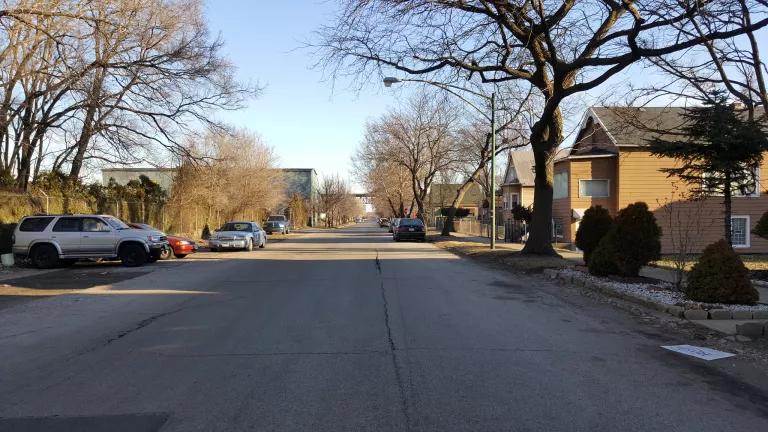If you can see pollution, then you sure as hell don’t want to be breathing it. That, in a nutshell, is the basis for the complaint filed today in federal court by NRDC and its coalition partners concerning Ameren’s aging E.D. Edwards plant near Peoria, Illinois. The complaint, read together with a notice of additional violations served today as well, points to more than 2,000 violations over 5 years of the plant’s visible emission standard, and the air pollution limits that are associated with that standard. The plaintiffs—which include NRDC and the Environmental Policy Center, Sierra Club, and Respiratory Health Association—ask the court to order the plant to clean up, and pay an appropriate penalty to the government.
The ongoing slew of violations stems from the plant’s ongoing exceedence of “opacity” limits. Opacity is a measure of the blackness of smoke coming out of a smokestack, which in turn shows roughly how much pollution—most notably particulate matter, or soot—is being emitted. In order to minimize particulate pollution from coal plants and monitor it continuously, regulators implementing the Clean Air Act (including the Illinois Environmental Protection Agency) put a percentage limit on the opacity of plant emissions—in this case 30% (that is, on a scale where clear air is 0% and a rock is 100%). Additionally, the law presumes that if you’re violating your opacity limit you’re also violating your particulate limit unless you can demonstrate otherwise through testing (which Ameren didn’t do).
The pollution from the Edwards plant measured through opacity is a deadly serious matter—literally. Numerous studies have documented the disease and premature deaths associated with dirty air from old-school coal-burning plants like Edwards. A comprehensive report prepared by the Clean Air Task Force titled The Toll from Coal found more than 13,000 premature deaths associated with coal-fired plants nationwide, and enumerated harmful impacts broken down plant by plant—showing the smoke-belching Edwards plant to contribute to seven deaths, ten heart attacks, and more than 100 asthma attacks each year. These come at a cost not only of human suffering, but of measureable dollars and cents borne by the community and taxpayers: according to the Task Force report, more than $50 million annually in connection with the Edwards plant.
This kind of unchecked pollution warrants immediate action. But Ameren’s response to the plant’s environmental problems has been to kick the can down the road and try to make it someone else’s problem. Last year, rather than adhering to its 2006 agreement install multi-pollutant controls on its Illinois fleet, Ameren petitioned the Illinois Pollution Control Board to let it off the hook for another five years (which the Board, unfortunately, mostly did). Then, earlier this year, Ameren announced that it was selling (come this fall) its Illinois fleet to Dynegy, which also owns multiple plants in Illinois—together with the fleet’s environmental liability.
But for the residents living with the plant’s pollution, the problem is not going to go away until someone buckles down and deals with it. No amount of dodging and weaving around environmental laws can change the fact that the Edwards plant is a dinosaur that needs to be either cleaned up or shut down. The 60s-era plant lacks the most basic modern pollution controls, such as scrubbers, and its opacity violations show that its particulate matter controls are in sorry shape as well. And while that situation persists, the cost of running the plant is falling on the shoulders of sickened community members rather than on the plant owner where it belongs.
It may turn out that operating the Edwards plant with the proper pollution controls can’t be done profitably. In its variance petition to the Pollution Control Board, Ameren included a citation to a Standard & Poor’s report suggesting that Ameren’s failure to spend money on coal-plant pollution controls “suggests management's lack of confidence in the longer-term economic sustainability” of de-regulated coal-fired power plants in Illinois. But one way or the other, we can only hope that Dynegy, when it takes over the plant, will waste no time in taking a hard look at that question and doing whatever needs to be done to clean up the Peoria region’s air.




